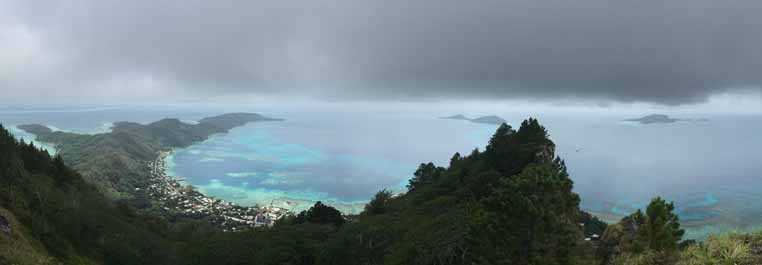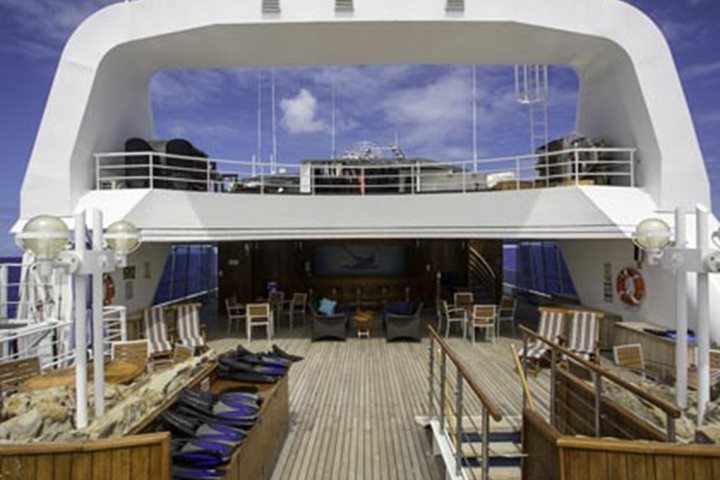The islands of French Polynesia present a wonderful variety of landscapes and scenery, from the steep green mountainsides of Tahiti to the enormous turquoise lagoons of the Tuamotus. Within this broad territory, the Gambier Islands are unique in being the smallest of the five major archipelagos and the remnants of a single huge volcano. A few fragments of that great mountain still rise above the waves, most notably the central island of Mangareva. The lagoon around these high islands is a picture perfect blue, sprinkled with small coral reefs and woven with pearl farms. Surrounding it all is the barrier reef, 15 miles across, with only three navigable entrances. The outer reef, home to an enormous variety of fish and corals, is often pounded by surf and drops off very steeply into the deep blue. All together, the Gambier Islands are roughly halfway in the long process that transforms a high island like Mo’orea into an atoll like Fakarava.
After entering the lagoon through the southwest pass, we launched our Zodiacs and landed on Mangareva at the outskirts of the main town, Rikitea. Intrepid participants in the long and very challenging hike up Mt. Duff set out immediately, eager to get an early start on their ascent. Mt. Duff is the highest point in the islands, rising to 1,447 feet above the lagoon. The trail is very steep and very demanding—it makes the climb in only two miles! As we hiked up the views got better and better and from the summit we could see the entire archipelago and far out over the sea beyond.
Meanwhile, others of us had chosen to explore Rikitea. Mangareva was occupied by a Polynesian community that first settled the islands in the 10th century, but became isolated and much reduced by the 15th century, before the arrival of Europeans. In 1834 French Catholic missionaries, including Father Louis Honoré Laval, came to Mangareva and began to convert the Polynesians to Christianity. Laval established what has been called a “theocratic dictatorship” and ordered the construction of St. Michael’s Cathedral—the largest in the South Pacific. We toured the cathedral and saw the impressive altar, richly decorated with pearls and pearl shell. We also made a visit to an abandoned nunnery on the mountain above town and had some free time to stroll the quiet streets.
In the afternoon, following a quick lunch, we moved on to enjoying the lagoon in, under and above the water. Divers went out to a nearby island where they found a beautiful, colorful reef. Snorkelers used our little floating island, the snorkel platform, to enjoy a fringing reef on the sheltered side of Mangareva, where they were joined by the glass-bottom Zodiac. The corals in the lagoon were extensive and very lovely, featuring lacey branching and table—shaped species of Acropora. There were also lots of fish to enjoy, including a couple of big groupers, which are a very good sign of a healthy reef.
Our final stop in French Polynesia summed up our time in the islands perfectly: C’est magnifique!







